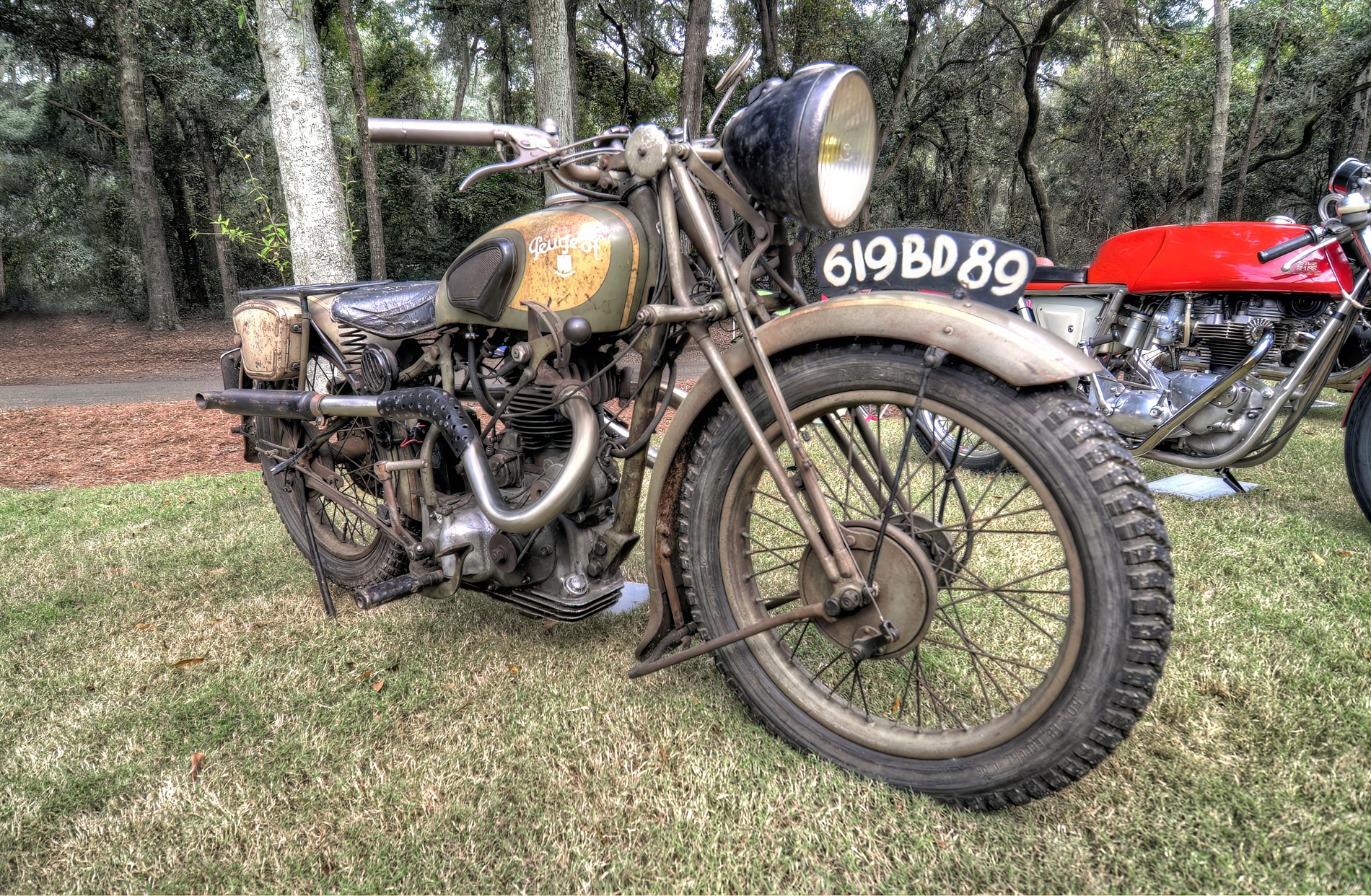
The 1939 Peugeot P135 is a 350cc single cylinder, overhead valve, twin exhaust port machine and remained in production until 1940. The Peugeot P135 is a testament to the engineering prowess and design excellence of pre-war European motorcycles. With its reliable engine, elegant design, and practical features, it remains a celebrated classic among motorcycle enthusiasts. The P135's legacy continues to be appreciated by collectors and historians, representing an important chapter in the history of motorcycling.
Overview
- Production Year: 1939
- Manufacturer: Peugeot
- Class: Standard motorcycle
Design and Specifications
- Engine:
- The P135 was equipped with a 346cc single-cylinder, four-stroke engine.
- The engine produced around 14 horsepower, which was quite respectable for a motorcycle of its size during that period.
- It featured an overhead valve (OHV) design, contributing to its efficiency and performance.
- Transmission:
- The motorcycle came with a 3-speed manual transmission.
- The gearbox was operated via a hand shift, typical for motorcycles of that era.
- Frame:
- The P135 utilized a tubular steel frame, providing a balance between strength and weight.
- The frame design was simple and robust, suitable for the varied riding conditions of the time.
- Suspension:
- The front suspension featured a girder fork with a central spring, a common design in the 1930s.
- The rear suspension was typically a rigid setup, although some models might have had basic damping to improve comfort.
- Brakes:
- The P135 was equipped with drum brakes on both the front and rear wheels, offering adequate stopping power for its performance.
Performance
- Top Speed: The Peugeot P135 could achieve a top speed of around 65 mph (105 km/h), making it competitive with other motorcycles of its class.
- Acceleration: The motorcycle provided decent acceleration, suitable for both urban commuting and rural riding.
- Handling: The combination of a lightweight frame and responsive engine made the P135 agile and easy to handle.
Design Features
- Bodywork:
- The P135 featured a streamlined design with elegant curves and a classic aesthetic.
- It had a teardrop-shaped fuel tank, enhancing its stylish appearance and providing sufficient fuel capacity for longer rides.
- Seating:
- The motorcycle had a single, sprung saddle seat, offering reasonable comfort for the rider.
- Some models might have featured a pillion seat for a passenger.
- Instrumentation:
- The instrumentation was basic, typically including a speedometer and possibly an odometer.
- The controls were straightforward, designed for ease of use.
Legacy and Historical Significance
- Historical Significance:
- The Peugeot P135 represents an important period in the history of motorcycle manufacturing, showcasing the technological advancements of the late 1930s.
- It reflects Peugeot's commitment to quality and innovation in motorcycle design.
- Cultural Impact:
- The P135 was popular among riders in Europe, known for its reliability and practicality.
- It played a role in the transportation needs of the time, providing a dependable mode of transport during an era of economic and political uncertainty.
- Collector's Interest:
- Due to its historical significance and classic design, the P135 is highly regarded by vintage motorcycle enthusiasts and collectors.
- Well-preserved or restored models are sought after and can be seen at vintage motorcycle shows and collections.
Taken at the Hilton Head Island Concours d'Elegance & Motoring Festival.
You may purchase a print of the 1939 Peugeot P135 in our dElegance 2015 online gallery.

